#Goose Habitat
Explore tagged Tumblr posts
Text

#Canada Geese#Waterfowl Watch#Nature's Grace#Lakeside Life#Goose Pair#Urban Wildlife#Feathered Friends#Colorado Birds#Goose Habitat#MissedMileMarkers
27 notes
·
View notes
Text
youtube
A BRIEF REMINDER:
The final order cutoff for the Image Comics edition of GRIZ GROBUS is TODAY! So if you're a comic book store owner, a independent bookstore manager, or anyone who reads comics, consider ordering the book!
What is Griz Grobus? Here, from the solicitation text:
On a distant planet, a prying scribe, a sentimental constable, and a mayor resurrect a sleepy town’s long-defunct priest-bot. But "Father Stanley" is not what he seems. Meanwhile, in another universe, a hungry wizard accidentally conjures a war-god into the body of a goose. These two intertwined tales make up GRIZ GROBUS, the hit Kickstarter graphic novel sensation now at Image Comics!
Perfect for fans of Hayao Miyazaki, Asterix, and Arthur C. Clarke, and readers 12 and up!
Arriving: June 5, 2024 Lunar Code: 0424IM239 ISBN: 9781534397866
Nice things other comics professionals have been saying about the book:
"Griz Grobus' dual dovetailing narratives let us discover an alien world and a human heart, full of Ghibli style and the finest Tor-novella poise. The team creates a universe, and is generous enough to let us live there." —Kieron Gillen, The Wicked + The Divine, Die, Phonogram
"Rich, beautiful and very funny—one of my favorite comics. Get every book Simon makes." —Tonči Zonjić, Lobster Johnson, Who is Jake Ellis?
"Simon's worldbuilding skills are yet to be matched, but on top of that his stories are both crazy and profound!" —Carlos P. Valderrama, Giants
“It’s amazing. You won’t get a better world builder than Simon Roy. He’s taking us places and I am here for it. Do not miss this.” —Daniel Warren Johnson, Transformers, Do A Powerbomb, Wonder Woman: Dead Earth
"When Simon Roy announces a new book it's an event - and a must buy for me and anyone who loves the medium of words and pictures!!!” —Geoff Darrow, Shaolin Cowboy, Hard Boiled
“Simon Roy’s science-fiction embraces heady ideas of futurism while never forgetting for an instant the foibles and frailties of the humans that exist in it. Griz Grobus is no different—an alien world made lived-in and real by the very human characters who exist within it, where at the end of the day, a full belly is what is worth aspiring to. Another extraordinary piece of work, an addition to a growing body of modern classic science-fiction, Griz Grobus continues the trajectory that began with Habitat.” —Jed McKay, Avengers, Moon Knight, Doctor Strange
“Simon Roy has a way of making strange & alien worlds utterly charming. His world building is unique & filled with quirky characters I strangely want to eat with. AND—I really want an Elaphure.” —Ben Templesmith, 30 Days of Night
"Griz Grobus combines beautiful art and mystical storytelling with an intriguing look at humanity on a world half-alien, half-familiar. A sly and often funny take on the creation of new myths and the rediscovery of the past." —Adrian Tchaikovsky, Hugo and Nebula award winning author of the Children of Time series
"Seriously, it's the perfect kind of Ursula Le Ghibli world and I adore it. The right measure of everything from the writing to the art." —Goran Gligovic, Dagger Dagger, Company of the Eagle
PS - If any of this piques your interest, I'm also running a kickstarter campaign for the hardcover edition of REFUGIUM, - the sequel to this very book! If you or your customers enjoy Wayne Barlowe's strange creatures, or the work of Dougal Dixon, it might scratch a particular itch for you...
11 notes
·
View notes
Text

a bunch of fruit together, call it an orchard
#top gun#top gun maverick#top gun fandom#top gun 1986#maverick#goose#iceman#pete mitchell#nick bradshaw#tom kazansky#THE FRUITS#the whole orchard#homosexuals in their natural habitat
79 notes
·
View notes
Text
bro I am a hella fish out of water in this Vegas hotel I just saw someone walking down the hallway holding an entire ass bong
2 notes
·
View notes
Text
January 2024 Witch guide
Full Moon: January 25th
New moon: January 11th
Sabbats: None
January Wolf Moon
Known as: Bear Moon, Chaste Moon, Cold Moon, Disting Moon, Goose Moon, Moon of Little Winter, Moon of Strong Cold, Quiet Moon, Snow Moon, Stay at Home Moon, Sun Has Not Strength to Thaw Moon & When Snow Blows Like Spirits In The Wind Moon
Element: Air
Zodiac: Capricorn & Aquarius
Nature spirits: Brownies & Gnomes
Deities: Freya, Hera, Innana & Saraswati
Animals: Coyote & fox
Birds: Blue Jay & pheasant
Trees: Birch & Hazel
Herbs: Cones, holy thistle &marjoram
Flowers: Crocus & Snowdrop
Scents: Mimosa & musk
Stones: Chrysoprase, garnet, hematite, moonstone, onyx & jet
Colors: Black, blue-violet, grey, silver & white
Energy: Adventurous, ambitious, awareness, beauty, beginning & conceiving; business, career, conserving energy, energy below the surface, organization, political matters, potential, protection, recognition, reputation, reversing spells & spirituality
The name for the January full Moon is believed to have originated from Celtic and Old English roots, which European settlers then brought to the New World.
At one point, gray wolves were among the most widespread land mammals on our planet. According to the Wolf Conversation Center, gray wolves “inhabited most of the available land in the Northern Hemisphere.” Habitat destruction and persecution by humans have reduced their range by about a third worldwide and 90 percent in the lower 48 states.
The wolf’s adaptable nature to survive in a wide range of habitats and ability to prey on the largest mammals living in those regions made it widespread. Basically, if there are enough deer, moose, elk, caribou, bison, and musk ox, wolves can survive. Predation of domestic animals caused friction with European settlers and early Americans who aggressively hunted the wolves.
Werewolf myths can be found in ancient Greek and Roman societies, throughout European history and among some Native American tribes. In modern storytelling the transformation from man to wolf has been closely tied to the full Moon in films like “The Wolf Man” and “American Werewolf In London.”
Howl at the Moon means to waste energy pursuing something unattainable. It’s shorthand for doing something crazy. However, howling is hardly a waste of energy among wolf packs. And they aren’t howling at the Moon. The Moon just happens to be shining during times when wolves most often howl.
A wolf’s howl can be heard miles away. The vocalization helps wolves locate separated members and even communicate between packs marking their territories. One study recorded spontaneous howls and responses happen most often between 11 p.m. and 6 a.m.
The cry of wolves doesn’t play into the Sioux name for the January full Moon, which is known as “The Time When Wolves Run Together.” Wolves do plenty of running to defend territory that can stretch hundreds of square miles to find enough prey to support the pack.
Other Celebrations
• Hogmanay | January 1st: is the Scots word for the last day of the old year and is synonymous with the celebration of the New Year in the Scottish manner. It is normally followed by further celebration on the morning of New Year's Day (1 January) and, in some cases, 2 January—a Scottish bank holiday. In a few contexts, the word Hogmanay is used more loosely to describe the entire period consisting of the last few days of the old year and the first few days of the new year. For instance, not all events held under the banner of Edinburgh's Hogmanay take place on 31 December.
The origins of Hogmanay are unclear, but it may be derived from Norse and Gaelic observances of the winter solstice. Customs vary throughout Scotland and usually include gift-giving and visiting the homes of friends and neighbours, with particular attention given to the first-foot, the first guest of the new year.
• Compitalia/ Feast of Lades | January 3-5: was an annual festival in honor of the Lares Compitales, household deities of the crossroads, to whom sacrifices were offered at the places where two or more ways met.
Dionysius said that Servius Tullius founded the festival, which he describes as it was celebrated in his time. Dionysius relates that the sacrifices consisted of honey-cakes (Ancient Greek: πέλανοι) presented by the inhabitants of each house; and that the people who assisted as ministering servants at the festival were not free men, but slaves, because the Lares took pleasure in the service of slaves. He further adds that the Compitalia were celebrated a few days after the Saturnalia with great splendor, and that the slaves on this occasion had full liberty to do as they pleased.
During the celebration of the festival, each family placed the statue of the underworld goddess Mania at the door of their house. They also hung up at their doors figures of wool representing men and women, accompanying them with humble requests that the Lares and Mania would be contented with those figures, and spare the people of the house
Sources:
Farmersalmanac.com
Llewellyn's Complete Book of Correspondences by Sandra Kines
A Witch's Book of Correspondences by Viktorija Briggs
Llewellyn's 2023 magical almanac: practical magic for everyday living
Wikipedia
Encyclopedia Britannica
#correspondence#witch guide#January 2024#wolf moon#wiccablr#witchblr#paganblr#witch community#witchcraft#witches of tumblr#tumblr witch community#witch tumblr#witch tips#beginner witch#traditional witchcraft#baby witch#witch friends#moon magic#wolves#grimoire#book of shadows#spellbook#spellwork#witchcore#witch#new year#witchy things#witches#baby witch tips#GreenWitchcrafts
262 notes
·
View notes
Text
Geese are punk, my reasoning?
• They’ve been known to attack police and cause general anarchy.
• geese don’t discriminate, they engage in homosexual relationships and form close bonds with animals of all species.
• They run around making loud noises
• they’re geese what more do you need to know.
• goose attacks are often the result of people urbanising habitats, resulting in geese and humans living in close proximity. This might be a stretch but I think this makes geese anti capitalism.
63 notes
·
View notes
Text
Is Magneto mistaken or am I taking this too literally?
Ambassador Magneto has a lot to say in House of X, especially to humans on the subject of violence.

All his dreams are coming true and he's not shy about expressing his feelings on the matter. At the Jerusalem habitat the other ambassadors (who are all intelligence plants) claim to be wary of military advantage Krakoa and the gates provide.

Let's fact check Magneto there. 'There has never been a mutant war.'

What's this then? It doesn't sound very good at first glance but can it be considered a mutant war? It's basically Magneto himself unleashing an EMP and making demands of the UN. A mutant sanctuary - one they gave him too - Genosha. Terrorist act? Yeah defs. War? I'd say no.
What else? Oh yeah, that time Magneto conquered Santo Marco, a fictional South American country. Spoilers for a comic from 1963.

Okay so shelling is bad, definitely a warlike action, though it's later said there were no casualties at all, mainly thanks to Mastermind's illusions. Still, really bad optics there dude. The fake soldiers are straight up goose-stepping. This is drawn by Jack Kirby too, who definitely had strong feelings about that kind of thing - not something he'd portray unintentionally.

You'll note Mags having pseudo telepathy at this point, mainly bc Stan Lee had no idea how magnetism works.
Let's be honest, there's a big Nazi vibe to this occupation. This is in X-Men #4 in 1963, over a decade before Mags was retconned into a Jewish holocaust survivor. I'm honestly not a big fan of the original X-Men run and I can see why it got cancelled. Magneto was their greatest foe, but he was a pretty one dimension Doctor DOOM expy with none of the pathos, willpower or consistent ideology Claremont would reinvigorate him with. Anyway, sensing defeat, Magneto arms a nuke to blow the whole country up. Yikes.

It's actually Quicksilver who solves that problem, deciding he's not okay with nuking a few million people. It's the start of his face turn proper, with only Wanda's 'debt' to Mags keeping her there, and therefore Quicksilver as well.

See? Not cool, Mags. Not cool. When it's all said and done though, his occupation of Santo Marco is very brief and news doesn't get out. I assume Chuck had something to do with that. Though the country refuses to accept Krakoa for 'ideological reasons' nearly 60 years later, so maybe not. I'm going to say it definitely counts as 'conquering their land and making slaves of their people ' though.
Honestly, Magneto has died a lot since then, had amnesia and barely aged in 70 years so maybe he doesn't remember. One could argue that the spirit of what he's saying is correct - Magneto the individual did a lot of supervillain shit but there hasn't been a unification of mutants who then warred upon humans. Indeed, the opposite is true. Most mutant conflicts that could be called a war were defensive after these events.

None of the 'ambassadors' took issue with past events or his record, instead focusing on future hypotheticals. Someone should tell them that if mutants united in world conquest they'd likely be very successful and humans wouldn't know until it was too late. Technically Magneto has been tried for his acts before an international court, and acquitted because he'd been turned into a baby and was considered a different person. Yes, really.
The conversation pivots to the emissaries being there in bad faith, with slick concealing a gun. (Not that it would be very useful.)

Magneto demonstrates why that's the case and doesn't budge on his position. I guess we could say Magneto was (technically) right, in this specific circumstance. A show of force is certainly needed to make them take Krakoa seriously. It's only fitting then that Mags acts as the stick to make the carrot more palatable. I've still got room for one more pic so here's the X-Men enjoying post-training birthday cake, cut by Cyclops and his POWER BEAM. The X-Men's first birthday as a group.

Note the contrast in vibes around the Brotherhood of EEEVIL Mutants' dinner table, with petty bickering, Mastermind being a creep (the X-Men have that too tho NGL,) and a very impressive tower of mashed potato. Good to know Toad has poor table manners and that Pietro is willing to punch on over it. Not to be mean, but Wanda's headgear looks super silly. Oh well, it was the sixties!
#x comics#x men#magneto#house of x#xmen#marvel#charles xavier#krakoa#professor x#toad#mortimer toynbee#jason wyngarde#mastermind#santo marco#scarlet witch#quicksilver#brotherhood of evil mutants#comics#magneto war#stepford cuckoos#max eisenhardt#pietro maximoff#wanda maximoff
55 notes
·
View notes
Note
I thought if would be funny if I drew spider-Erin so idk here’s what I thought spider-Erin would look like in there natural habitat ( torturing peter and others)

Also bat goose

this is so super cute!!!! i love the colors so much, i'd totally use them for a spider-sona!!
70 notes
·
View notes
Text
Animal of the Day!
Swan Goose (Anser cygnoides)

(Photo by Craig Brelsford)
Conservation Status- Vulnerable
Habitat- Mongolia; Northern China; Russia
Size (Weight/Length)- 3 kg; 90 cm
Diet- Grasses; Roots; Leaves; Aquatic plants
Cool Facts- Despite being a goose through-and-through, the swan goose is named for its elegant neck. Males are typically heavier than females but both have equal responsibility for raising a family. Divorce rates are extremely low for swan geese and they typically mate for life, although they can remarry if their mate passes away. They live close to freshwater lakes and streams but they leave the water to graze on surrounding grass. Swan geese have been domesticated over the years for their large eggs, resulting in a slow decline of the wild population. Their temperament is typically pretty vicious, especially when goslings are present. They won’t hesitate to attack anything from raccoons to foxes to humans.
Rating- 12/10 (A 1.8 meter long wingspan.)
#animal of the day#animals#birds#geese#swans#sunday#november 5#swan goose#biology#science#conservation#the more you know
171 notes
·
View notes
Text
Wet Beast Wednesday: Cuvier's beaked whale
Today's Wet Beast Wednesday post is going to be a deeper dive than usual, because this week's post is about the deepest-diving whale. Beaked whales are an elusive and poorly-understood family known for diving to extreme depths. Of the 24 known species, Cuvier's beaked whale is the most well-known. Dive in (get it?) to learn about this cryptic cetacean.
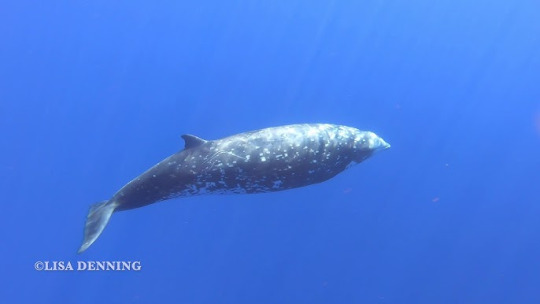
(Image: a Cuvier's beaked whale underwater. It is a small whale similar in appearance to a bottlenose dolphin, though stockier and with a shorter snout. The dorsal fin is far back on the body Its body is gray and covered in white, circular scars, likely bites from cookie cutter sharks. End ID)
Beaked whales are poorly-studied because of their remote habitats and tendency to spend more time underwater than other whales. It is also often hard to distinguish between different species without a close examination. The name comes from their skulls, which are notably toothless and elongated around the mouth, making them look like they have beaks. Beaked whales only have one pair of teeth and they only grow out in males. Female beaked whale teeth remain in the gums and never grow. Cuvier's beaked whale (Ziphius cavirostris), sometimes called the goose-beaked whale, is large for a beaked whale, with the larger males maxing out at 7 meters (23 ft) and 3.5 tons. They resemble dolphins in body shape, but with robust and stocky bodies. Their bodies are gray to light brown while the heads are lighter in color, especially in males. The melon is relatively small and the mouth is shorter than in most beaked whales, making it easier to differentiate them. The melon is an organ found in toothed whales that aids in echolocation.
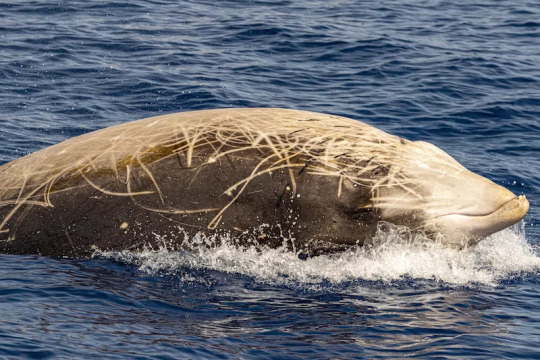
(image: a beaked whale peaking its head out of the water. It is likely a male due to its white face. Its back is densely covered in long, whit scars. End ID)
Beaked whales have multiple adaptations to deep diving. During dives, the heart rate decreases and blood flow is redirected to more important organs and tissues. The lungs collapse, leaving oxygen storage to the hemoglobin in the blood and myoglobin in the muscles. Long periods of time without breathing results in the buildup of lactic acid in the blood, which can be toxic. Beaked whales have enlarged spleens and livers that may help filter lactic acid out of the blood. Their bodies are very streamlined and the flippers can be held very tightly against the body to reduce drag. There are likely other adaptations for very deep and very long dives that have not been studied.
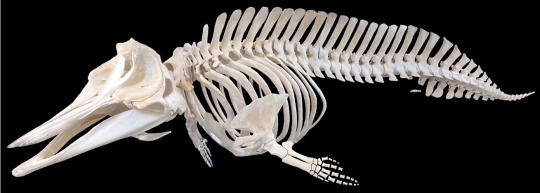
(Image: the skeleton of a Cuvier's beaked whale. It is somewhat short for a whale, with small flippers. The skull is long and flat. End ID)
Cuvier's beaked whale is the most widely-distributed beaked whale, being found worldwide in tropical to temperate waters. They prefer to swim in very deep water and are rarely seen near shore. Cuvier's beaked whale holds the record for the deepest and longest dive of any marine mammal. The records (recorded by satellite tags) for depth was a dive to 2,992 m (9,816 ft) and for length was a 222 minute (about 3.75 hours) dive. The whales will usually make multiple shallower dives to around 500 m (1,640 ft) between each deep dive, possibly to give their bodies time to recover while still searching for food. They spend very little time at the surface between dives, usually no more than 8 minutes. These short surface intervals may be to avoid predators like orcas. Occasionally, longer surface intervals of several hours have been observed. Their hunting behavior changes depending on how deep they dive. On shallower dives, they remain silent, possibly to avoid being overheard by predators, while on deep dives, they use echolocation to find prey in the darkness of the deep ocean. Cuvier's beak whale hunts via suction. They open their mouths while retracting the tongue and enlarging the throat to create a vacuum that sucks prey into their mouths, which is then swallowed whole. Dissections have revealed that squid make up over 80% of their diet. The whales forage in small pods that coordinate their dives and hunting strategy. It has been speculated that the teeth of males are used to fight over access to females. Males have been found with scars that would seem to fit being raked with another male's teeth. Males also generally have more scars than females, which would be consistent with them fighting each other. Almost nothing is known about beaked whale reproduction, though calves do live with their mothers as in other whales.

(Image: a Cuvier's beaked whale jumping out of the water. End ID)
Little is known about the conservation needs of Cuvier's beaked whale. They are likely the most abundant species of beaked whale due to their wide distribution. They are known to be threatened by entanglements in fishing nets and have been harvested by whalers in the past. They may be targeted by the Japanese whaling industry, but it is difficult to be sure due to the secrecy of said industry. Cuvier's beaked whale is known to be vulnerable to sonar, especially mid-range sonar. They have been observed avoiding areas where sonar is used and use of sonar has been correlated to mass strandings and symptoms of decompression sickness (the bends). It is possible that the sonar drives them to ascend from dives too quickly, leading to potentially fatal gas embolisms. Notably, several mass strandings happened in the Canary Islands while naval exercises were performed there. Once those exercises stopped, the mass strandings stopped as well. Cuvier's beaked whale was described and named by naturalist, zoologist, paleontologist, and virulent racist and misogynist Georges Cuvier, who described it using a skull he thought was a fossil. There has been a small push recently to begin using the name goose-beaked whale instead to keep from honoring him.

(Image: a Cuvier's beaked whale poking its head out of the water. Its body is light gray, with a few scars. End ID)
#wet beast wednesday#whale wednesday#cuvier's beaked whale#goose-beaked whale#beaked whale#whale#whales#cetacean#toothed whale#marine mammals#marine biology#biology#ecology#zoology#animal facts#informative#educational#image described
26 notes
·
View notes
Text

The goose family crossed into a place they should not be. That ws close to a red winged black bird


#Bird Photography#Nature Photography#Wildlife Watching#Goose#RedWingedBlackbird#Wetland Wildlife#Urban Nature#Birds In Reeds#Wildlife Habitat#MissedMileMarkers
29 notes
·
View notes
Text

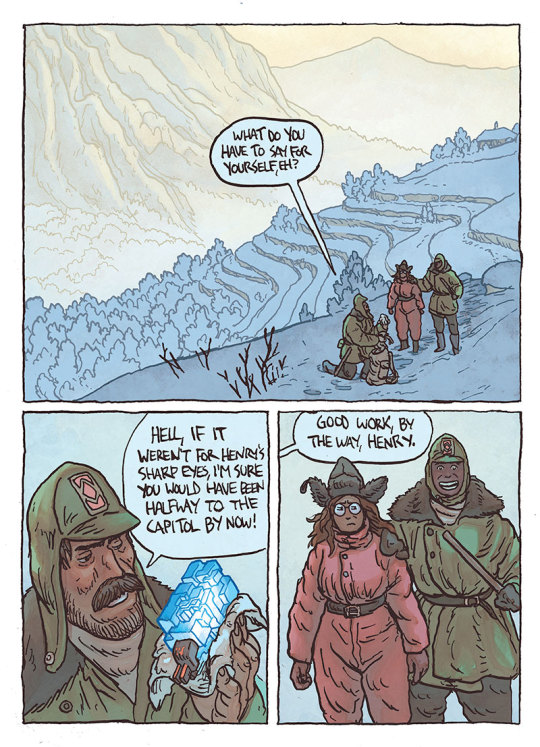
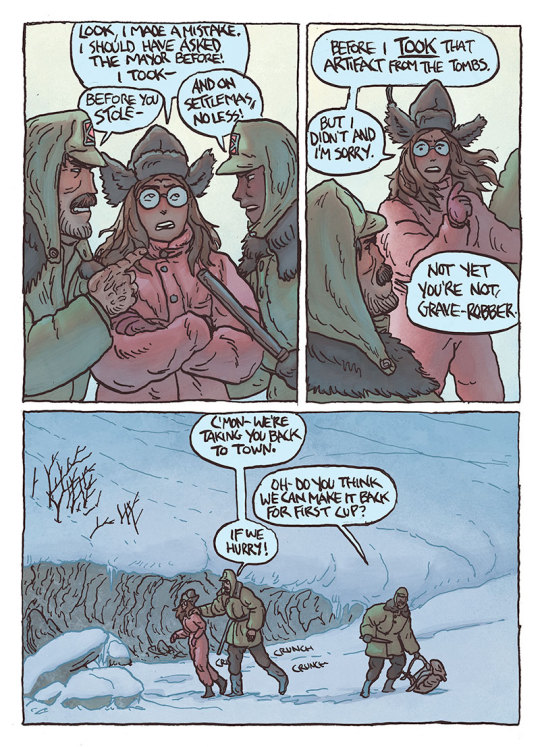
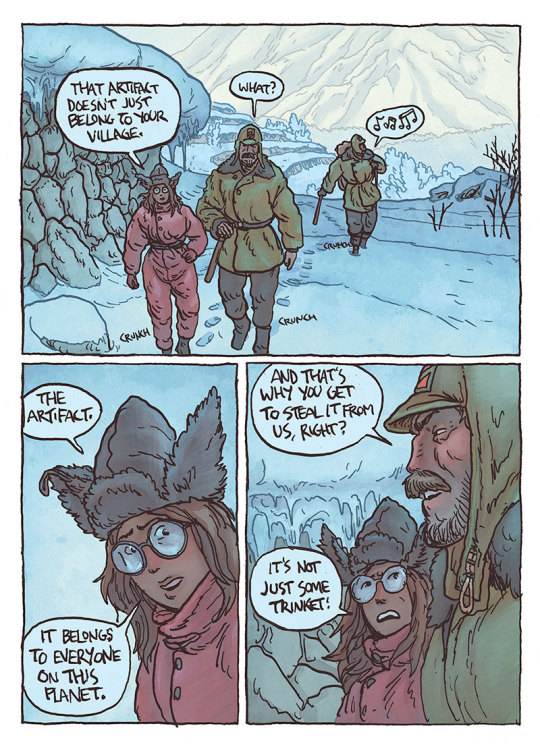
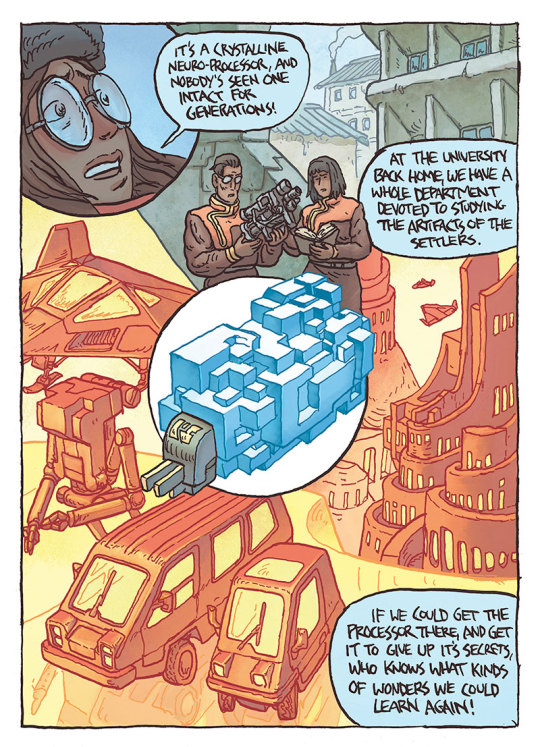
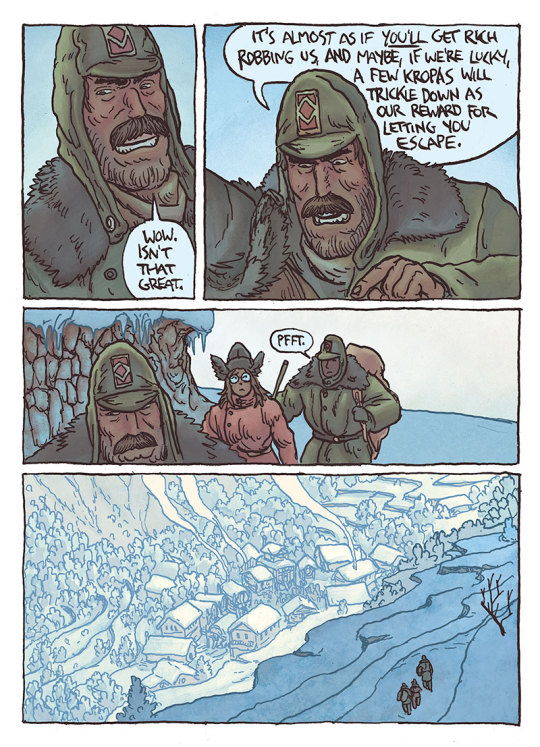
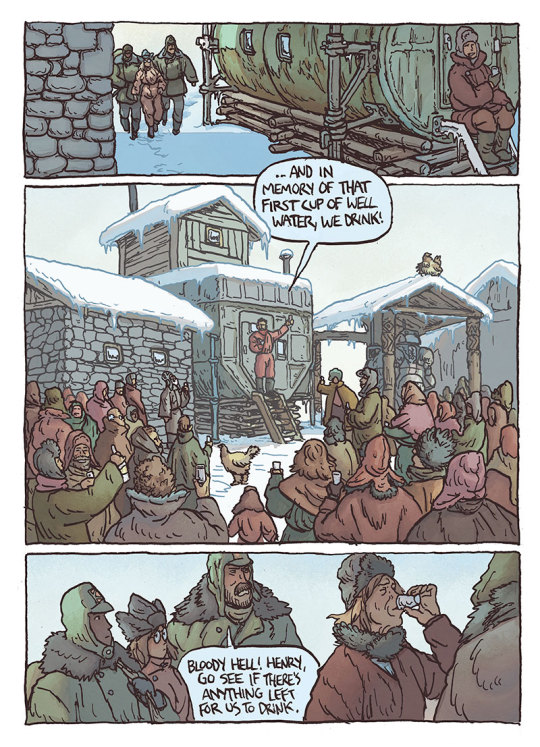
A little press release from Image comics - we're putting out a mass market edition of Griz Grobus! Press release follows:
PORTLAND, Ore. 12/07/2023 — The high fantasy, graphic novel Kickstarter sensation, Griz Grobus, by co-writer/artist Simon Roy (Prophet, Jan's Atomic Heart and Other Stories) and co-writer Jess Pollard, with colors by Sergey Nazarov, will be available in trade paperback format for the first time this June 2024 from Image Comics.
Griz Grobus was originally a popular Webtoon sequential webcomic that leveled up its exposure with the 2021 launch of a Kickstarter campaign for a stunning hardcover edition. The campaign ignited fandom fervor, was fully funded in under a day, and raised nearly $70K—far exceeding the stretch goal. This Summer’s forthcoming paperback edition will bring this roaring success story to an even wider audience of readers.
"Part of what we wanted to make, in Griz Grobus, was a story that felt like a foreign film from a country you haven't heard of," said Roy. "Natural, familiar elements, sitting harmoniously alongside the new and unfamiliar. The proposition of getting to introduce a whole new audience to our little pocket universe, and the worlds within it, is very exciting!"
Set in the same sci-fi universe as Roy's Habitat,Griz Grobus is another tale of life after the collapse of the interstellar empire. But unlike Habitat—where a once utopian orbital community found itself descending into cannibal tyranny—the characters of Griz Grobus inhabit the rural world of Altamira, where post-utopian frontier life has blossomed into something a bit more wholesome.
Pollard added: "I can definitely say it is one of the funniest, most delightful things I've ever been a part of, and I laugh every time I read the story, as if I'm reading it for the first time. I hope readers will feel the same warmth when they read this edition, whether it be for the first time, the second, or third.”
Griz Grobus tells two parallel, intertwined tales from the far-off colony world. High in a sleepy mountain village, the overzealous academic ambitions of a young scribe lead to the resurrection of the town’s ancient colonial-era priest-bot. This long-defunct pastor finds himself in a world that has passed him by, but refuses to simply accept his obsolescence, much to the chagrin of the scribe and the local townsfolk. The second story, a mise-en-abyme, is Altamira’s most famous novel (being avidly read by the characters of the first story). It is a fantasy tale about a war-god who gets trapped in the body of a goose, and the efforts of one pacifist cook to delay the war-god’s bloody return to the battlefield.
This lush, intricately detailed, standalone fable is perfect for fans of Hiyao Miyazaki, Asterix, and Arthur C. Clarke.
The Griz Grobus trade paperback (ISBN: 9781534397866) will be available at local comic book shops on Wednesday, June 5 and independent bookstores, Amazon, Barnes & Noble, Books-a-Million, and Indigo on Tuesday, June 4.
Griz Grobus will also be available across many digital platforms, including Amazon Kindle, Apple Books, and Google Play.
278 notes
·
View notes
Text

Chipper's Top Gun Sketch Book!
In which he captured Goose, in his natural habitat, getting third wheeled by Icemav, poor fella
[Click for better quality, reblogs appreciated]
Bonus: alt version with Chipper's notes!

#sam draws#top gun#top gun 1986#top gun fanart#icemav#chipper#charlies chipper piper#charles piper#maverick#pete maverick mitchell#pete mitchell#iceman#tom kazansky#tom iceman kazansky#goose#nick goose bradshaw#nick bradshaw#fanart#digital art#art#Chipper's sketch book
327 notes
·
View notes
Text



The goose in her many habitats
#dogblr#marlo#soooo happy to see the goose this week#shes looking awesome and very spry for 10 years old
92 notes
·
View notes
Text

Prehistoric 'Giant Goose' Skull Found in Australia
The skull of a prehistoric "giant goose" has been discovered in Australia.
It belongs to a now extinct giant flightless bird that weighed 230kg (36 stone) - about five times as much as an emu.
The 45,000- to 50,000-year- old fossil is the most complete skull of a Genyornis newtoni to have been discovered.
And researchers say the “stunningly rare find” will give them insight into what the bird looked like.
"Realising it was an intact skull was just so satisfying," lead author of the study, in the journal Historical Biology, Dr Phoebe McInerney, of Flinders University, Adelaide, said.
"I thought, 'Oh my gosh, this is amazing - we actually found one'.
"The Genyornis has been known [about] for 128 years - and now we've actually got a skull for it."


The 32cm (1ft) skull was found, in 2019, in the dry beds of Lake Callabonnam - a remote region of inland South Australia where thousands of animals once became stuck in the mud - attached to an almost complete fossilised body of the bird.
The only other known skull for this species, reported on in 1913, was heavily damaged and had only a small amount of the original bone, so little could be gleaned from it.
But this latest discovery reveals these giant birds had:
a massive cranium.
large upper and lower jaws.
an unusual casque, like a helmet, on the top of their head.
They also had a wide gape, strong bite and could crush soft plants and fruit on the roof of their mouth.
Genyornis newtoni is a relative of the Australian magpie goose but evolved before them in a separate lineage and is more closely related to the South American screamer species.
Unravelling its relationship to other species had been complex, Dr McInerney said, but the new find had enabled researchers to start to "piece together the puzzle, which shows, simply put, this species to be a giant goose”.
The last of the large, flightless mihirungs, or thunderbirds, native to Australia, they roamed the outback at the same time as other giant creatures, including lizards and kangaroos, and when the first humans arrived, about 50,000 years ago.
And the size and appearance of this "weird and wonderful" bird would have made it "quite a sight to see," according to Dr McInerney.


Jacob Blokland, who has created a scientifically accurate reconstruction of the about 2m (6ft) bird, said: “Using modern birds as comparatives, we are able to put flesh back on the fossils and bring them back to life.”
The researchers also discovered the giant birds had many unusual adaptations for aquatic habitats, protecting their ears and throat from water when submerged.
And they said this could have led to their extinction, some 45,000 years ago, as fresh water bodies in northern South Australia were now mostly salt lakes.
Dr Gerald Mayr, an ornithologist at the Senckenberg Research Institute, Frankfurt, said fossil bird skulls were "stunningly rare" and this "extraordinary find" provided insights into the role the giant bird played within the Australian ecosystem at the time.
By Nia Price.

#Prehistoric 'Giant Goose' Skull Found in Australia#extinct giant flightless bird#thunder bird#Genyornis newtoni#Lake Callabonnam#fossil#ornithologist#palaeontologists#archaeology#archeolgst#history#history news#ancient history#long post#long reads
22 notes
·
View notes
Text
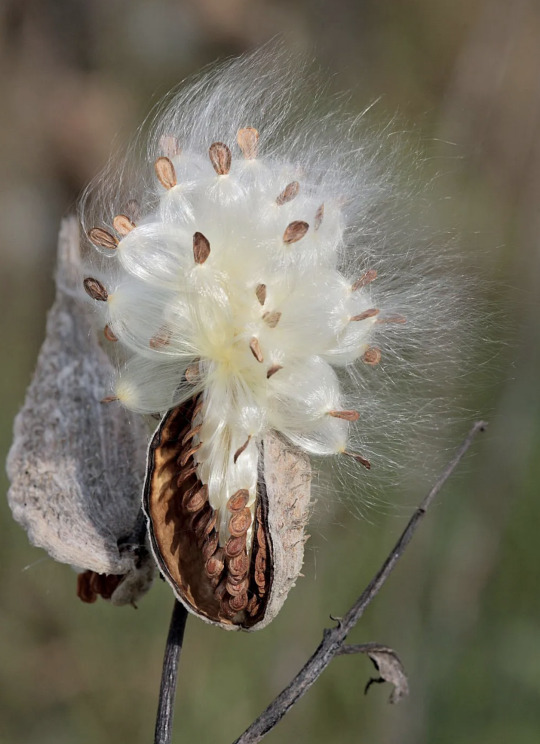
A couple of days ago, I was collecting seeds from the milkweed pods in our yard. Having not done this before, but being fully aware of the fuzzy stuff that flies out of the pods, I was battling fuzz (technically, "floss") as I was pulling off and storing the seeds. Then I got smart, and decided to cut a slit in the pods and then gently pull out the mass of floss and seeds, and then just pulling the seeds off and dropping then into the container. As I was doing that, I noticed how super soft the floss was as I pulled it fresh out of the pods, and wondered........do any clothing manufacturers use this stuff? Did a Google search, and learned....yep!
Excerpt from this story from Happy Eco News:
As consumers demand more eco-conscious apparel, brands are getting creative with natural materials that keep warmth in and environmental harm out. One unlikely hero emerging from prickly planted fields is the common milkweed—yes, literally plucked straight from the wild. While best known as the sole food source for iconic, struggling Monarch butterflies, milkweed’s hidden potential is nestled right inside its fluffy, silken floss. This fleecy fiber is an amazing natural insulator and is finding a new application in jackets, parkas, boots, and ski gloves for humans.
As outdoor apparel companies race to reduce environmental impacts, milkweed clothing insulation is proving a promising substitute for conventional insulation fillers—one aligned with cleaner agricultural systems. Its hollow-cored fluff offers an animal-friendly, biodegradable alternative to goose down. Unlike petroleum-based synthetics like polyester fibers, milkweed fills garments with a regeneratively sourced material that decomposes rather than lingering for centuries in landfills.
With conscious consumerism accelerating across industries, apparel buyers now consider impacts far beyond cost and quality when evaluating purchases. An unlikely hero from both suffering North American grasslands and climate crosshairs is rapidly gaining traction as a sustainable insulation material – common milkweed floss. Beyond keeping heat in and winter out with insulating performance rivaling goose down, milkweed rates exceptionally on multiple sustainability indicators resonant with eco-conscious consumers.
As a native perennial thriving on marginal lands, milkweed flourishing requires no irrigation, fertilizers or pesticides – regrowing reliably year after year. From a toxicity and allergen standpoint, milkweed avoids issues associated with many synthetic insulations or down. And supporting milkweed crop expansion helps reverse monarch butterfly declines blamed on agricultural habitat loss. For shoppers concerned over microplastics shedding into waterways from standard fleece, milkweed offers a soft, homegrown, biodegradable alternative. In short, milkweed checks all the boxes for socially mindful consumers seeking future-focused apparel that balances functionality with ethical, regenerative supply supporting threatened pollinators.
Signaling the momentum of milkweed clothing insulation, major brands like Patagonia are incorporating the fluff through novel partnerships with companies like Vegeto Textiles. Dedicated milkweed plantings bandwidth habitat zones while fibers make their way into garments. Other types of textile manufacturers are also jumping on board, some with announced plans to insulate blankets and quilts with milkweed.
Still, despite its promise, milkweed clothing insulation remains in its infancy. Technological barriers to processing millions of floss strands into a stable textile filling have just recently been worked out. Machinery and techniques to update this long-known application concept into a scalable commercial reality. Companies have worked for years honing best practices for taking raw milkweed fluff through cleaning, drying, and fiber alignment steps to transform fuzzy floss into outdoor-ready filling. Advancements in the coming decade will further improve integration potential across diverse textile products, opening doors for milkweed clothing insulation in everything from t-shirts to winter boots.
15 notes
·
View notes